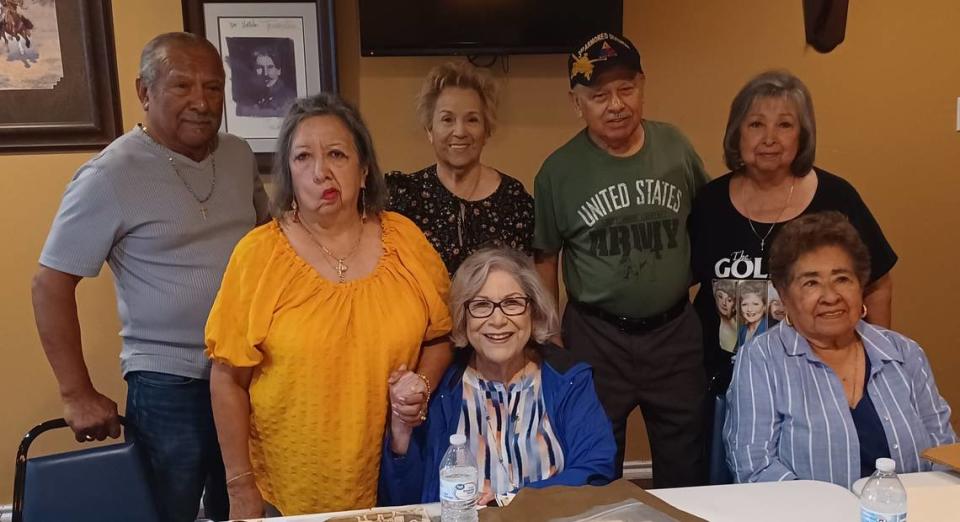Black kids weren’t the only ones segregated in school. Fort Worth people share memories
A 1931 “Report of the Survey of the Schools of Fort Worth” by George D. Strayer and associates listed schools where Mexicans attended. A “Mexican School,” consisting of 65 Latino/a students, was located in a building provided by the Presbyterian Church at present day Tarrant County College Trinity River Campus on Henderson Street. According to a 1927 school board resolution, the school was created at the request of Mexican parents living in the Florence Street neighborhood. One teacher taught first and second grade.
Latino/a students attended other elementary schools, mostly at M.G. Ellis, A. J. Chambers, and South Fort Worth. Black students taught by Black teachers went to “Colored Schools” such as I. M. Terrell, James Guinn, Ninth Ward, and Lake Como.
The study showed some Latino students started school late, such as a 14-year-old in the first grade, an 18-year-old in the second grade, and another 18-year-old in the third grade. The Latino dropout rate increased dramatically after 14 years old. The report attributed the attrition to no Latino/a students attending kindergarten, language difficulties, and family mobility. Researchers recommended the district deal with the “retardation” by offering two-year kindergarten to the Latino/a children with a focus on learning English. They also recommended closing the Mexican school and transferring the students to vacant classrooms at John Peter Smith Elementary. No mention was made of integrating them into regular classrooms.
In 1929, another “Mexican School” was created as an annex to South Fort Worth Elementary. Katy Lake Elementary was named after the man-made lake developed in 1908 by Missouri-Kansas-Texas (MKT) Railroad. Located at 3900 St. Louis Ave. in Worth Heights, the school was taught by two teachers in a wooden building. First grade was taught in one classroom, while second and third grades were taught in the other.
Several Katy Lake alumni interviewed, now in their late 70s, 80s and one 90-year-old, said the school was established to segregate Latino Spanish speaking students in the early grades. They estimated 50 percent of the students were Spanish dominant and the rest bilingual. All of the interviewed alumni were second generation citizens, born and raised on the South Side. They graduated from Trimble Tech High School.

José Antonio (Tony) Vasquez recalled he would accompany his mother, Minnie Vasquez, to clean the school. He was unsure if she was paid. He joined the Air Force after high school and eventually worked as an air traffic controller.
His brother Tom Vasquez was double promoted and attended North Texas State University for a few years. He joined the Army and later worked at Sears as a big-ticket salesman.
Josie Velasquez Pittman took vocational education classes, working half the day at department stores. She eventually became an accountant for attorneys and the Lena Pope Home.
Hortencia Pacheco Laguna graduated from Tarrant County College with an RN degree and worked at John Peter Smith Hospital in the operating room. Through her travels with a medical team that performed cleft palate surgical repairs in Mexico, she met a TCU board member who arranged a meeting with the TCU director of nursing school. She received a scholarship and graduated with her BSN degree. Seeking to work as a Fort Worth ISD school nurse, she applied but was denied employment. School board representative Carlos Puente intervened and opened the door for Laguna to work as the district’s first Latina school nurse.
The Spanish-dominant students at Katy Lake attempted to learn through the immersion method. Laguna said many of them didn’t make it to high school graduation. Josie Pittman shared that when an adult translator was required, the teachers would call her mother, Estefana Velasquez, who lived nearby, to come to the school.
The alumni said they didn’t experience any punishments for speaking Spanish at Katy Lake and found the teachers warm and close to their parents. Katy Lake was closed because of declining enrollment. On the last day of school, May 31, 1954, the PTA gave first grade teacher Mrs. Celeste Fairbanks a lapel watch and second and third grade teacher Mrs. Matilda Deere a necklace.
Most students and teachers were transferred to newly opened Worth Heights, where they went to school with Anglo children. Connie Vasquez Medina recalled corporal punishments for speaking Spanish on campus started at the new school. Tony Vasquez observed that when he transferred to South Fort Worth Elementary, he found the Anglo students friendly to the new dark-skinned student. It appeared that adults had more concerns than students about different races learning together.
Tom Velasquez and Connie Medina stated that Katy Lake students were proud and had parents who expected them to study, treat the teachers respectfully, and to finish high school. Laguna observed they came from poor families who emphasized working to survive. Many Latino/a youth married young, had children and received little parental encouragement to go to college. After Laguna’s children grew older, she convinced her husband to allow her to earn a bachelor’s degree.
Her mother, Demetria Pacheco, entrusted her as a child to enroll her younger brother at South Fort Worth Elementary. When the principal refused, she relayed the rest of her mother’s message: Demetria would speak with the superintendent if her son was denied admission. The informed principal admitted the boy. Young Laguna learned the importance of speaking up to overcome restrictive school rules and traditional cultural roles.
Author Richard J. Gonzales writes and speaks about Fort Worth, national and international Latino history.

